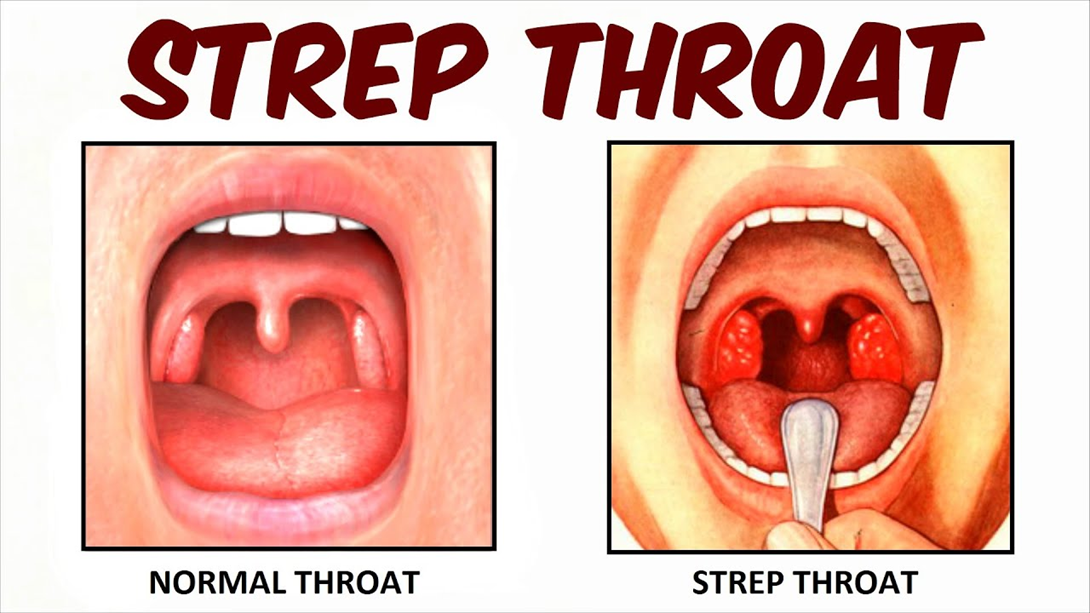A preschool-aged child who is being tested for Streptococcal pharyngitis returns to the clinic for signs of scarlet fever. Which assessment finding
provides the clearest indication to the nurse that the child is experiencing a reaction to toxins that are created by Streptococcal bacteria?
Flushed, peeling skin
Red bumps across chest
White coating on tongue
High, protracted fever
The Correct Answer is B
Choice A reason: Flushed, peeling skin is not a specific finding for scarlet fever. Flushed, peeling skin can be caused by various factors, such as sunburn, dehydration, allergic reaction, or infection. Scarlet fever is a condition that results from a Streptococcal infection in the throat or skin that produces toxins that cause a rash and fever. The rash usually begins on the neck and chest and then spreads to other parts of the body.
Choice B reason: This is the correct answer because red bumps across chest are a characteristic finding for scarlet fever. Red bumps across chest are part of the rash that develops due to toxins produced by Streptococcal bacteria. The rash usually feels like sandpaper and may be accompanied by itching or burning sensations. The rash typically lasts for about a week and then fades, leaving behind peeling skin.

Choice C reason: White coating on tongue is not a clear indication for scarlet fever. White coating on tongue can be caused by various factors, such as dehydration, poor oral hygiene, fungal infection, or inflammation. Scarlet fever may cause white patches or red spots on the tongue, but this is not a distinctive feature of scarlet fever.
Choice D reason: High, protracted fever is not a unique finding for scarlet fever. High, protracted fever can be caused by various factors, such as infection, inflammation, dehydration, or immunological disorder. Scarlet fever may cause high fever (above 101°F or 38.3°C), but this is not a definitive sign of scarlet fever.
Nursing Test Bank
Naxlex Comprehensive Predictor Exams
Related Questions
Correct Answer is A
Explanation
Choice A reason: applying the client's positive airway pressure device can help prevent or reduce episodes of apnea and hypopnea during sleep by keeping the airway open and delivering oxygen. The nurse should ensure that the device fits properly and that the client knows how to use it.
Choice B reason: elevating the head of the bed to a 45 degree angle is not as effective as using a positive airway pressure device for a client with OSA. Elevating the head of the bed may help reduce snoring and improve breathing, but it may not prevent airway collapse or oxygen desaturation.
Choice C reason: removing dentures or other oral appliances is not as important as applying a positive airway pressure device for a client with OSA. Removing dentures or other oral appliances may help prevent choking or aspiration, but it may not prevent airway collapse or oxygen desaturation.
Choice D reason: lifting and locking the side rails in place is not as important as applying a positive airway pressure device for a client with OSA. Lifting and locking the side rails in place may help prevent falls or injuries, but it may not prevent airway collapse or oxygen desaturation.
Correct Answer is D
Explanation
Choice A reason: Increasing oral fluids may help with hydration, but it will not reduce skin flushing caused by lisinopril. Lisinopril is an angiotensin-converting enzyme (ACE) inhibitor that dilates blood vessels and lowers blood pressure. Flushing occurs due to increased blood flow to the skin.
Choice B reason: Nitroglycerin is a vasodilator that relaxes smooth muscle in blood vessels and reduces chest pain caused by angina. It is not indicated for skin flushing caused by lisinopril. Moreover, nitroglycerin can lower blood pressure further and cause hypotension, headache, dizziness, and fainting.
Choice C reason: Going to an emergency department is not necessary for skin flushing caused by lisinopril. Flushing is not a sign of an allergic reaction or anaphylaxis, which would require immediate medical attention. Flushing is also not a symptom of a heart attack or stroke, which would present with other signs such as chest pain, shortness of breath, arm numbness, or slurred speech.
Choice D reason: Reassuring the client that facial flushing is a common side effect of lisinopril is the best action for the nurse to take. Flushing is not harmful or dangerous, and it usually subsides within a few hours. The nurse should explain the mechanism of action of lisinopril and its benefits for lowering blood pressure and preventing angina. The nurse should also advise the client to monitor his blood pressure regularly and report any signs of hypotension, such as dizziness, lightheadedness, or fainting.
Whether you are a student looking to ace your exams or a practicing nurse seeking to enhance your expertise , our nursing education contents will empower you with the confidence and competence to make a difference in the lives of patients and become a respected leader in the healthcare field.
Visit Naxlex, invest in your future and unlock endless possibilities with our unparalleled nursing education contents today
Report Wrong Answer on the Current Question
Do you disagree with the answer? If yes, what is your expected answer? Explain.
Kindly be descriptive with the issue you are facing.
